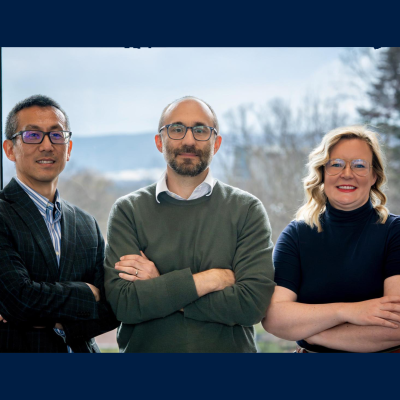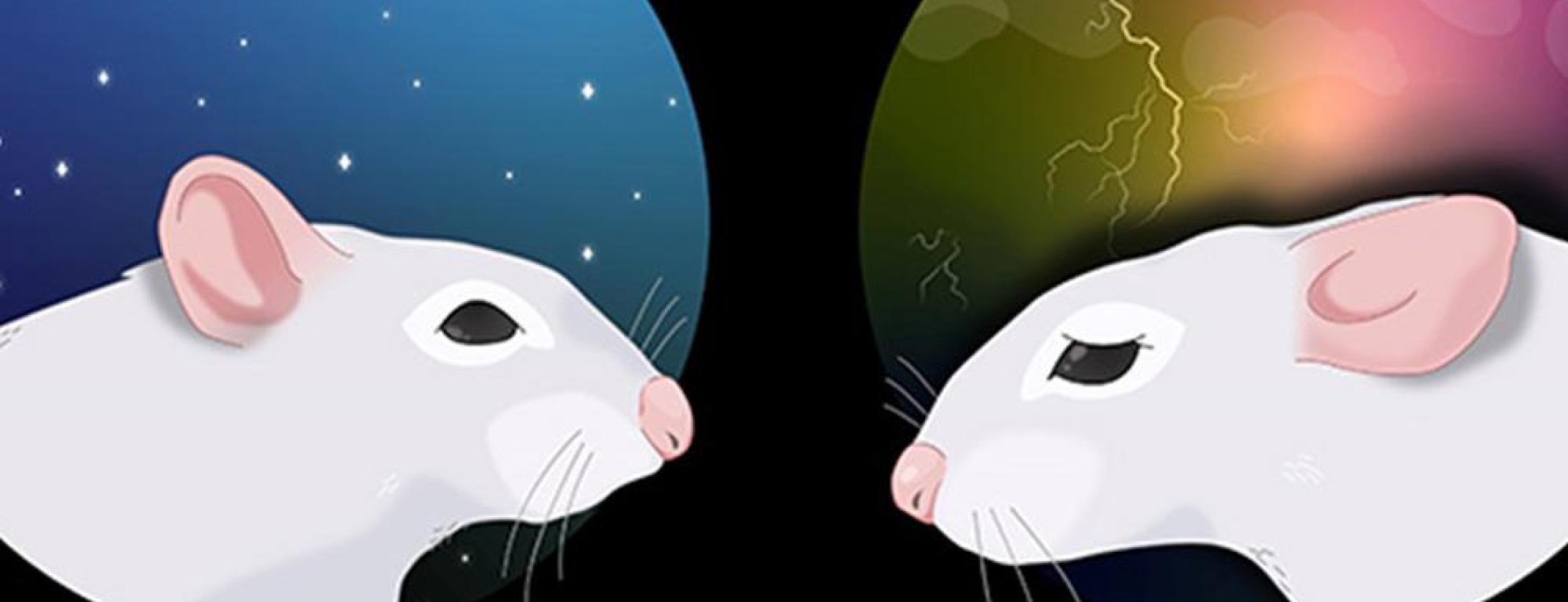
Dreams, and likely nightmares, are experienced universally across humans and animals, but neuroscientists still do not know why. Now, with a three-year, $1.2 million grant from the W.M. Keck Foundation, an interdisciplinary team of researchers at Penn State will study the underlying mechanisms of nightmares and their relationship with anxiety-related mental health disorders, such as post-traumatic stress disorder (PTSD).
The team aiming to expand the scientific understanding of nightmares includes principal investigator Patrick Drew, professor of engineering science and mechanics at Penn State; and co-principal investigators Nikki Crowley, associate professor of biology and of biomedical engineering, Huck Early Career Chair in Neurobiology and Neural Engineering and director of the Penn State Neuroscience Institute at University Park; and Nanyin Zhang, the Dorothy Foehr Huck and J. Lloyd Chair in Brain Imaging and professor of biomedical engineering, of electrical engineering and of engineering science and mechanics.
“To me, the exciting thing about this research is that we now have a way to gain insight into the purpose of dreams,” said Drew, who also has affiliations with the biomedical engineering, neurosurgery and biology departments at Penn State. “The question of why we dream has puzzled mankind for millennia, and by looking at what changes in neural circuits and behaviors nightmares cause, we hope to be able to figure out the biological purpose of dreaming.”
To investigate the neural mechanics of nightmares, the researchers will rely on the side effects of the drug mefloquine, which was once used by American soldiers as a disease preventative during deployments to Somalia, Afghanistan and Iraq. Though effective in preventing malaria, the drug is no longer prescribed due its serious neurological side effects, including inducing nightmares. The researchers will test mice treated with the drug for two weeks while monitoring them for unusual behaviors.
“In the past, it has been hard to study dreams, because it is hard to determine what is a regular dream state and what is a nightmare,” Zhang said.
Led by Drew, researchers will use novel imaging techniques to map the mice’s facial expressions and pupil sizes to know which sleep stage they are in. The team will also use functional magnetic resonance imaging (fMRI), led by Zhang, and calcium signal recording, led by Drew, to record the specific neuron type that might be underlying the dream or nightmare.
Through the various imaging methods and behavioral observations, researchers will record what is happening within the animals’ brains at each sleep stage, including rapid eye movement and non-rapid eye movement stages. The researchers, led by Crowley, will also monitor the neurotransmitters and neuromodulators in two regions of the brain, the prefrontal cortex and amygdala, to understand how these systems are disrupted during nightmares. Through these observations, the researchers said they hope to determine if there is an indication of nightmares having a relationship with mental health disorders, like PTSD.
“Most people believe that nightmares are a consequence of having PTSD, but there is also the possibility that nightmares could exacerbate symptoms or even cause the presence of mental disorders,” Zhang explained.
Using the mice as a model, the researchers said they plan to develop a framework to predict the onset of mental health disorders, such as anxiety, due to the presence or absence of nightmares. If successful, their model could lead to sleep intervention-based treatments for people suffering with these conditions, according to the researchers.
“Penn State is distinctively suited to carry out this research, both in the capabilities of our team and in possessing the resources and intellectual space for a high-risk question like this one,” Crowley said. “Our post-docs and grad students, in particular, have an opportunity to contribute to a fascinating philosophical and biological research question that very few scientists will ever get to work on in their entire career.”
The W. M. Keck Foundation was established in 1954 by oil company founder William Myron Keck. As a philanthropic institution, the foundation supports discoveries in science, engineering and medical research that are distinctive or novel in their approach or promise to develop new technologies, instrumentation or methods. This award is the first W. M. Keck Foundation grant directed to Penn State in almost 25 years.
At Penn State, researchers are solving real problems that impact the health, safety and quality of life of people across the commonwealth, the nation and around the world.
For decades, federal support for research has fueled innovation that makes our country safer, our industries more competitive and our economy stronger. Recent federal funding cuts threaten this progress.
Learn more about the implications of federal funding cuts to our future at Research or Regress.
Grants from philanthropic foundations advance the University’s historic land-grant mission to serve and lead. Through philanthropy, alumni and friends are helping students to join the Penn State family and prepare for lifelong success; driving research, outreach and economic development that grow our shared strength and readiness for the future; and increasing the University’s impact for families, patients and communities across the commonwealth and around the world. Learn more by visiting raise.psu.edu.
